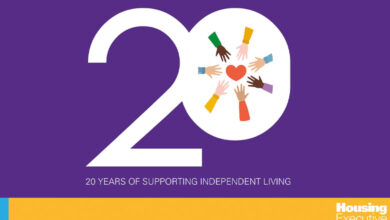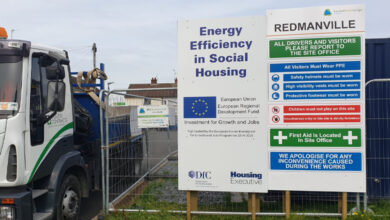The election in numbers: analysis by Sydney Elliott
 Dr Sydney Elliott sums up the main developments in the Assembly poll.
Dr Sydney Elliott sums up the main developments in the Assembly poll.
Thursday, 5 May had the most extensive series of elections ever on a single day in Northern Ireland. The date was normal for the four-year cycle of elections to the Northern Ireland Assembly.
The coincidence with elections to 26 district councils arose from the failure to introduce the 11 new councils in time and elections, due in May 2009, were postponed until May 2011. The third referendum layer was a result of the Conservative-Liberal Democrat coalition programme, which imposed a UK-wide referendum on the alternative vote on 5 May. It was a challenging combination with fears that one level of election might suffer from voter boredom.
There had been some concern that turnout might be markedly down given the 42 per cent turnout in the 2009 European election and the 57.9 per cent in the 2010 Westminster general election – the lowest ever in a general election in Northern Ireland. In addition, turnout had fallen in each successive Assembly election, from 70 per cent in 1998, to 64 per cent in 2003 and 62.9 per cent in 2007. On 5 May turnout across the three elections was roughly the same at 55.5 per cent. The usual east-west division was again evident with the highest turnout in Fermanagh and South Tyrone (69%), Mid Ulster (65.4%) and West Tyrone (64%), and the lowest in the east with North Down (45.9%), East Antrim (47.8%) and Strangford (48.6%).
The turnout revealed an interesting fact which reflected on the debate about the use of a preferential ballot in AV elections versus the categorical choice with the X ballot. In the referendum using an X ballot 7,062 papers were invalid, 6,401 were unmarked or void for uncertainty. In the Assembly elections, using the preferential ballot of PR-STV, there were 12,369 invalid votes. Of the total poll in both elections this was 1.1 per cent and 1.8 per cent respectively. In 2007 the Assembly election had 6,225 rejected ballots, 0.9 per cent of the votes polled.
Campaign
The election was contested by 218 candidates, 39 fewer than in 2007. The reduction was general with 15 fewer unionists, nine nationalist and republican and 15 others. Only two parties increased their candidates: Alliance with four and Sinn Féin with three.
The number of women candidates also fell to 38, nine fewer than in 2007. Women were on the ballot paper in every constituency, except Newry and Armagh, and there was a general awareness of gender balance. Sinn Féin promoted the largest number of women candidates with 11, followed by the DUP and Alliance with seven, the SDLP four, the UUP three, TUV two and the Greens, UKIP, BNP and independents with one each.
One of the main talking points was the length of time taken to produce results from the three elections. The distribution of votes in the district council election was delayed until Monday 9 May but the verification process for the three elections began on Friday 6 May. The cumulative effect of the decisions on when to start verification and a number of delays was that the result of the referendum, with a national announcement, could not be made until the early hours of Saturday morning.
The first results of the Assembly election missed the media expectation by some hours, missed the evening meal-time news programmes and left broadcasters scratching for scraps of information from their reporter network about the causes of delay or hints from party tallymen at the count centres about the state of first preferences. The result was some exaggerated language about ‘political meltdown’, strange transfer patterns etc. The distribution of preferences does take time but the final seats were filled in Mid Ulster at 7pm on Saturday night.
The results showed the consolidation of political power with the DUP and Sinn Féin (see table). The DUP gained two seats and Sinn Féin gained one while their rivals UUP and SDLP respectively lost two seats each. The Alliance Party had a good election winning an extra seat and an extra 2.5 per cent of the vote. The Progressive Unionist Party failed to regain the seat it had lost when Dawn Purvis had moved to independent status. The TUV won its first seat, in North Antrim, in the form of party leader Jim Allister QC. The Green Party retained its seat but with a different candidate, StevenAgnew.
One independent, David McClarty, was elected in East Londonderry. His success and designation as independent cost his former party (the UUP) a second Minister and department in the Executive to the benefit of the Alliance Party.
The DUP and Sinn Féin had 67 seats, some 62 per cent of the total membership, more than enough for a coalition of two parties in polities where less extraordinary rules applied.
Renewed
The election renewed the mandate of the Assembly and helped renew the membership. Altogether 29 MLAs elected in 2007 would not return for a variety of reasons (for changes see Issue 46, page 13). In addition, 25 new members were elected comprising six UUP, six DUP, five Sinn Féin, four SDLP, two Alliance, one TUV and one Green Party. There was an increase in the number of women elected: 20, two more than in 2007. They comprised eight Sinn Féin, five DUP, three SDLP, two UUP and two Alliance.
The newly-elected Assembly faces the problems of implementing the budget cuts which were unpopular. In addition, the Assembly has to review the working of its institutions by 2015. The Boundary Commission proposal to reduce the number of parliamentary constituencies from 18 to 16 would reduce the Assembly numbers to 96; some parties wanted to reduce the number of members per constituency to five from six. Such changes in numbers could make it more difficult for smaller parties to win representation.
Some support was also expressed for a reduction in the number of departments which would also impact on smaller parties. However, change must be made by consensus and by legislation at Westminster. Efficiency and consensus have not been good companions to date. A further period of political stability, agreed policy goals and sound outputs could help foster accommodation and change.
| Party |
Votes
|
Seats
|
||
|
%
|
Change
|
No.
|
Change
|
|
| DUP |
30.0
|
-0.1
|
38
|
+2
|
| Sinn Féin |
26.9
|
0.7
|
29
|
+1
|
| SDLP |
14.2
|
-1.0
|
14
|
-2
|
| UUP |
13.2
|
-1.7
|
16
|
-2
|
| Alliance |
7.7
|
2.5
|
8
|
+1
|
| TUV |
2.5
|
2.5
|
1
|
+1
|
| Green |
0.9
|
-0.8
|
1
|
0
|
| PUP |
0.2
|
-0.4
|
0
|
-1
|
| Others |
4.4
|
-1.7
|
1
|
0
|
|
100.0
|
108
|
|||





